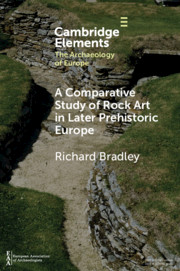Element contents
A Comparative Study of Rock Art in Later Prehistoric Europe
Published online by Cambridge University Press: 23 September 2020
Summary
- Type
- Element
- Information
- Online ISBN: 9781108885638Publisher: Cambridge University PressPrint publication: 22 October 2020
Bibliography
- 11
- Cited by

